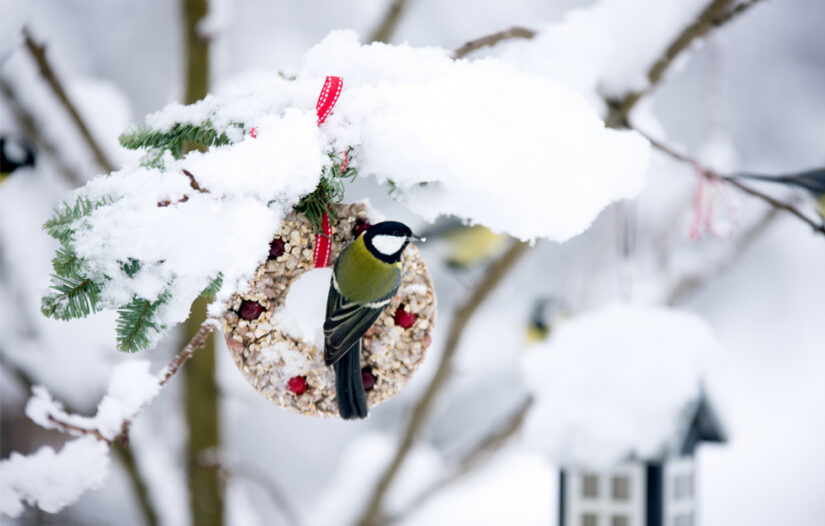 Shutterstock / gnepphoto©
Shutterstock / gnepphoto©It’s my turn to take you behind the scenes on the Features Team, so welcome to my “week in two acts”.
Why two acts? Well, though I work full time, I squeeze those hours into four days, not five.
Wednesday is my interval, so the rest of the week is early starts, late finishes and a quick bite for lunch!
Monday starts with a review of my various work plans and email.
Then there’s usually a quick online chat with my Features Team colleagues to catch up on the weekend before joining the rest of the PF team for our 9.30 meeting.
The Monday meeting
We no longer see the physical “dummy” issue that we used to read in the office. Now, instead, going through the digital issue currently on sale is our best chance to see the magazine as a whole.
It’s an opportunity to appreciate the work of all the people involved in putting it together.
There are many – from contributors, editorial staff, illustrators and designers, the vigilant production team, Angela, our colleagues in the Advertising, Operations and Administration Teams, and of course, the Digital Team, who make sure the right pixels appear in the right place for all our Digital subscribers!
Iain’s Digital meeting follows immediately after, where he takes us through the statistics for our website and social media accounts.
It’s always good to hear what you, our readers, find of most interest. That also guides our thinking about the sort of features you might enjoy in the magazine itself.
After the meeting, it’s time to turn our attention to current and future issues of the magazine.
My focus for the first half of my week tends to be preparation for our Tuesday Features Meeting, as well as dealing with any production queries.
The second half will focus more on the features themselves, and on administration. That’s a sweeping generalisation, though, as both kinds of activities can and do turn up throughout the week!
Ready to print
The preparation of the weekly magazine and the Specials for the printers continues through the week. In the Features Team, we all need to keep an eye on where things are up to in the production system.
The computer software that we all use gives an eagle’s eye view of each issue, with all the pages visible on the screen in rows and columns, each one colour-coded to show its stage in the process.
Clicking on any page shows further information, including a tasklist where members of the teams write notes and queries about the content.
Here’s where a Designer might ask for a different image, or a member of the Production Team might query a fact or spelling in a feature. That way, anyone working on that page can see any questions that have arisen and how they have been resolved.
Once Angela is satisfied that all is OK, a page can go on to the final stages.
If a page needs external approval, it’s our job to send it for vetting. This doesn’t happen with all features, but where we have experts writing and commenting, such as in my money, pets and cookery pages, they will have a final check to make sure all is well.
After approval, the pages are coded green. That’s the equivalent of putting a printed-out page in our old physical dummy. Finally, we read some of the pages we haven’t already seen and send Judey a note of any (rare) corrections.
The rhythm of the production process is a constant background to the week, with responding to queries, vetting and reading continuing until the press deadline – whereupon it all starts again with the next issue!
Before production
But how do the pages make it to that screen in the first place?
It’s a bit like an iceberg – the issue is the part you see, but nine tenths of the process is invisible!
Our Fiction Team colleagues have taken you behind the scenes with the stories. In Features, we work slightly differently, as much of our work is research and writing, as well as a fair amount of administration to keep track of everything!
We each have our own areas to look after.
I edit the cookery, money and pets pages. I also produce the “Think Green, Be Green” page (known by us for speed as the “eco page!) Another of my fun tasks is to develop ideas of our popular series “Dogs With Jobs” with writer Lorna Cowan. We’re currently planning series two.
This month, it was also my turn to produce the “This Week We’re Loving” pages for our July issues.
We take this in turns, partly to share the work, but mostly to keep it fresh and interesting. Four people have a much wider range of curiosity than one.
We think that shows on the page, as we share our enthusiasm for things we’ve found and hope you’ll love them, too. We also share the job of keeping up to date with non-fiction books for our books pages.
Generating ideas
Our regular features mean that we’re constantly reviewing our subjects (recipes, money, pets and sustainability for me), as well as talking to our experts and to the companies and agencies who send us information, to ensure we’re covering areas you’ll find interesting and topical.
In addition, we all work on the general features in the weekly and specials. We have many valued Features writers who send us ideas. We pitch these, along with our own suggestions, to the rest of the team and to Angela, at our weekly Features Team meeting.
We’ve taken you behind the scenes of the Tuesday Features Meeting before. It is the hub of our week. It’s also where, every month or so, I agree with Angela which of the year’s 70-odd themes and 350-plus recipes, selected from the many hundreds we receive, will feature in forthcoming issues of the weekly and Special.
From idea to feature
Emerging from Tuesday’s meeting, we’ll deal with processing the decisions we made.
At the meeting, we will have decided issue dates for some of the finished features we have taken in. We work quite far ahead, so you won’t see some of the features we decided to buy on Tuesday until early 2022! (They’re worth waiting for.)
We’ll tell the writers the good news. Then, with the help of our fantastic Admin Team, we deal with the payments.
We’ll then follow up on the ideas that were approved for development. This might mean further research and some writing ourselves, or we might send the idea to one of our freelance writers.
We’ll also pass on feedback about ideas that didn’t make it. Some are good ideas, just not right for the magazine, or we’ve had a similar feature too recently. Others could be adapted, only needing a few tweaks to be perfect for us.
Finally, it’s time to make sure that the Production Team have all the copy and images they will need to work their magic in bringing the words to the printed page.
And finally . . .
The weeks on the “Friend” are a constant round of activity.
In addition to our work on the issues, we there are monthly meetings with the whole team, company-wide meetings, training – and I haven’t even mentioned our work on the annuals, the website, social media, or our lovely new podcast!
There is one other thing missing – I haven’t told you about our secret new project. That would be to tiptoe too far behind the scenes for now, but we think you’ll love it when you see it!
For more peeks behind the scenes on the “Friend”, click the tag below.




